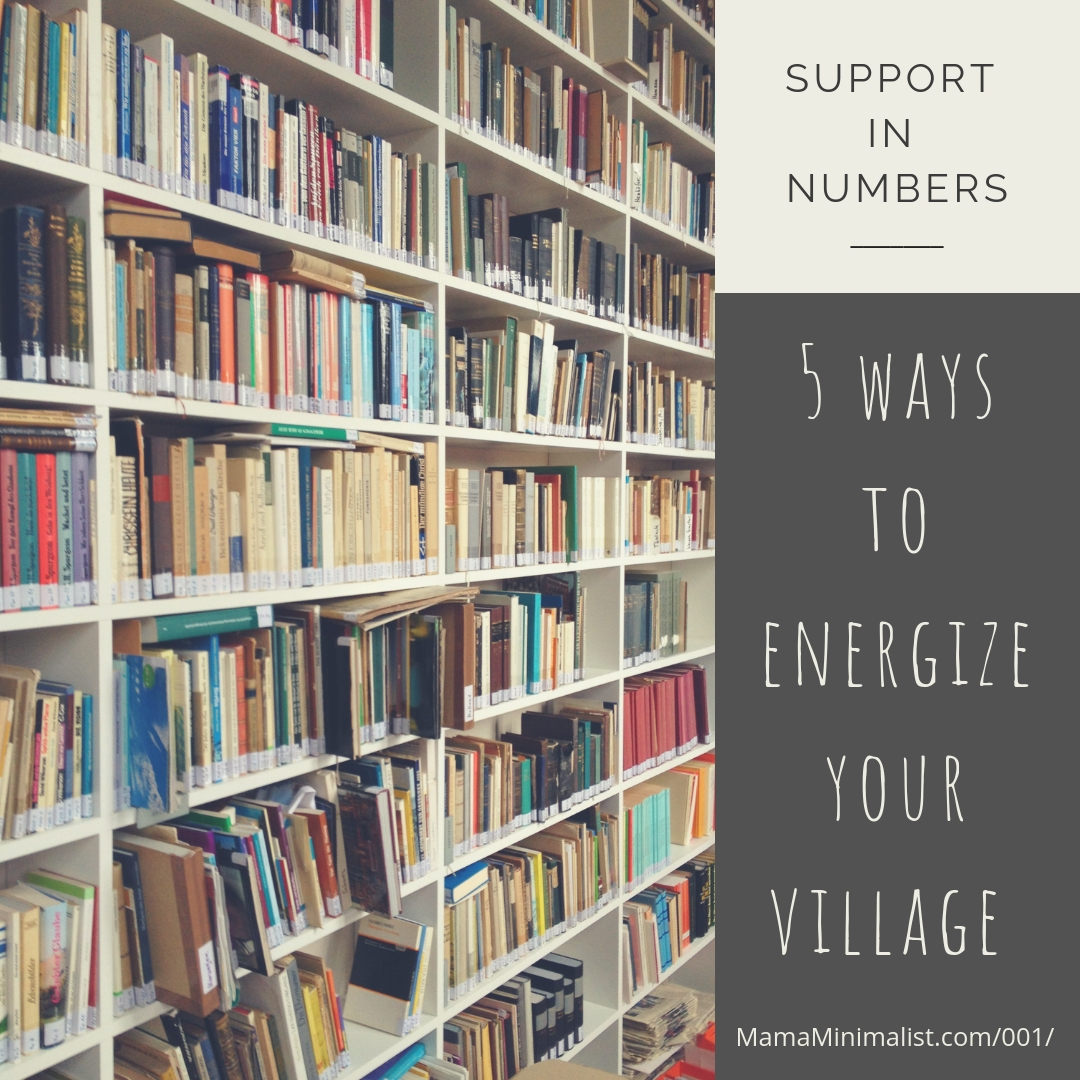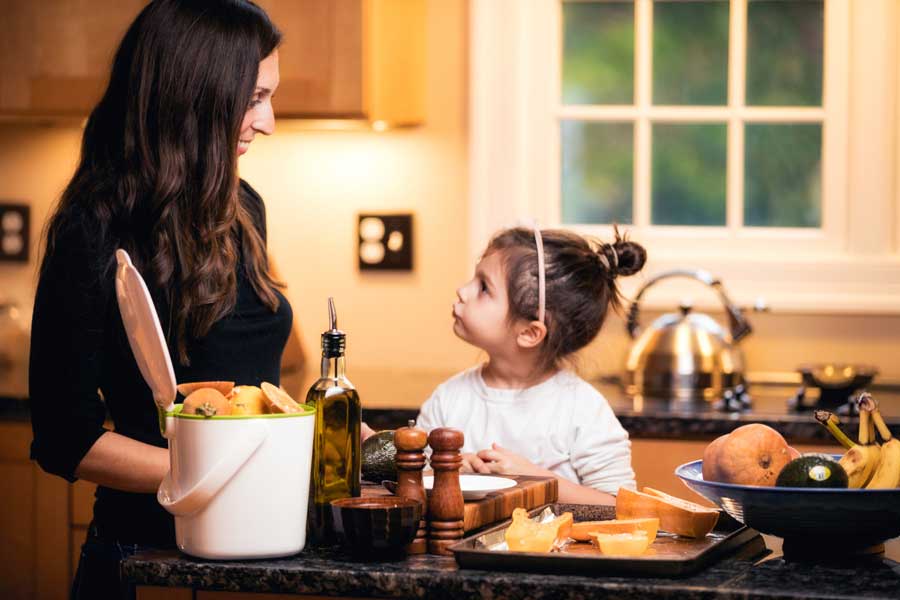5 Ways to Energize Your Village
It takes a village, or so the old adage goes.
The truth is, our villages – our communities – offer countless resources for families who aspire to live minimally. Indeed, with a bit of creativity, opportunities in our own backyards are endless.
Energize your village! Here’s how.
1. Spearhead a Toy Swap.
_____
At three years old, Ani is obsessed with puzzles. She’s pretty good at them, too; sometimes she’s too good, because after she has solved one once, she has zero interest in doing it again. The result is more than a dozen 24, 36 and 48-piece puzzles stacked high in the play room’s corner, untouched.
Ani’s interest in other toys similarly wanes. When another, newer toy is introduced, she forgets all the rest. Old toys are old news.
I have rotated her toys by “hiding” some in the basement and reintroducing them weeks later; while this strategy worked well when she was younger, she’s older now. She’s onto me.
It’s a conundrum: As a mother, I want to provide educational toys designed to spark Ani’s imagination and creativity. But I don’t want to mindlessly consume, and I certainly don’t want to spoil her.
My solution? Spearhead a Toy Swap. Here’s how:
– Find three or four mom friends with children of similar ages. Only ask moms you know well, and keep the Swap small (four participants work well).
– Lay the ground rules. A week between Swaps is a healthy duration.
– Make the schedule, then give to all mothers in the Swap.
– Optional: Place labels on the bottom of your child’s toys so you’re sure to get yours back at the end.
2. Moderate a Town-wide Curb Alert.
_____
Whomever said, “nothing in this world is free” never joined a Curb Alert Facebook group.
After noticing a nearby town had a “Curb Alert”, a woman in my community started one as well.
It’s a closed Facebook group available only to town residents. The rules are simple: If you have something to unload, take a photo of it and put it on your curb. List your address or offer it up in a private message. Whoever arrives first claims the item. Easy!
One person’s trash becomes another person’s treasure. Today, my town’s Curb Alert has over two thousand members.
The majority of items posted are for children – toys, gear and – once in awhile – a really great stroller – but the beauty of Curb Alert is its members can offer up absolutely anything.
My greatest Curb Alert find was a deep freezer; all I had to do was pick it up from the curb. My “new” freezer has been happily humming along in our basement for two years.
There are benefits to a Curb Alert program for both the giver and the receiver. While the receiver gets something needed for free, the giver effortlessly unloads an unwanted possession.
3. Utilize Overlooked Resources.
_____
Your local library, parks, playgrounds and hiking trails are “village staples” for a reason: For both children and adults, physical, mental, emotional, and social benefits abound. Best of all, they’re free for the entire family.
Your Town Library
Researchers have argued for consistent, sustained interactions with books for decades. The benefits of reading are endless: books stimulate the imagination and expand world understanding. They also facilitate language development and listening skills.
At three years old, Ani devours books. And while she has some favorites in her personal collection (the Llama Llama books and the Pigeon series, as examples), she usually asks to read a book twice before absorbing the majority of its content. Then – much like with toys – she’s onto one that’s newer, shinier and seemingly more interesting.
Libraries, therefore, are the perfect way to consistently give the gift of reading without wasting resources. (They’re also a great place to unload books in good condition from your home collection!)
_____
Playgrounds
The health benefits of outdoor exercise transcend the cardiovascular and musculoskeletal. Using a swing stimulates cognitive development and sensory stimulation (Frost, 2004). And the unstructured nature of playgrounds guarantees imaginary play, a vital pillar of children’s cognitive development.
_____
Hiking trails, Greenways and Conservation Lands
Researchers argue that sustained activity outdoors is superior to indoor exercise:
“Walking in nature improves measures of revitalization, self-esteem, energy and pleasure, and decreases frustration, worry, confusion, depression, tension and tiredness far more than light activity indoors does, according to the latest evidence.”
Utilizing outdoor resources also offer the opportunity to unplug from the stressors of daily life.
_____
… And More
Get creative. Where I live, there are countless farms, a community theater, and public beaches. There’s also local recycling events that enable families to discard unwanted electronics in a way that gives resources back to your community. Genius!
4. Host a Clothes Exchange.
_____
A Clothes Exchange is similar to a Toy Swap, but is different in two important ways:
– In a Clothes Exchange, both children and adults can benefit.
– The clothes offered up are not ultimately returned.
A friend hosted a Clothes Exchange for adults. I asked her to reflect on the experience:
“(Hosting) was surprisingly easy. I instructed my friends to come with as many or as little items and accessories from their own closets that they would otherwise donate. When (the participants) arrived, they organized their items according to size, then they sifted through, tried on, and took home what they liked … Afterwards, I gathered whatever was left behind and donated it to a women’s shelter.”
When I asked her what’s the single most predictor of a successful Clothes Exchange, she said the key is to invite many women so there is an abundance of clothes in various sizes. She also suggested asking participants to bring a beverage or an appetizer because the event ended up feeling more like a party than a Clothes Exchange.
A clothing swap can easily be conducted for children’s clothes as well, but be sure to have a variety of sizes in both boys and girls styles so that no one leaves empty-handed.
5. Upcycle your Recyclables.
_____
Rummage through your recycle bin and see what interesting “toys” you can find.
Ask your neighborhood grocery store what they’ll happily give away.
If your town has a recycle center, take as much as you can carry.
Then encourage your child and his or her friends to get creative by hosting a Recycling-themed play date.
I hosted one myself. My mom friends and their preschoolers brought over various recyclable items, which we pooled. Then we let the kids go wild.
My daughter made a rocket ship out of two Amazon boxes; she made its seat belt out of a folded paper bag. Her friends painted fireworks with carefully cut toilet paper rolls. The result was a themed play date utilizing resources we would have otherwise discarded.
Does the thought of preschoolers, glue and glitter make you anxious? You can upcycle your recyclables without hosting a party. I have been saving every toilet paper and paper towel roll my family would have otherwise discarded for the past six months. When my bounty is big enough, I’m planning to design + build a castle with Ani.


